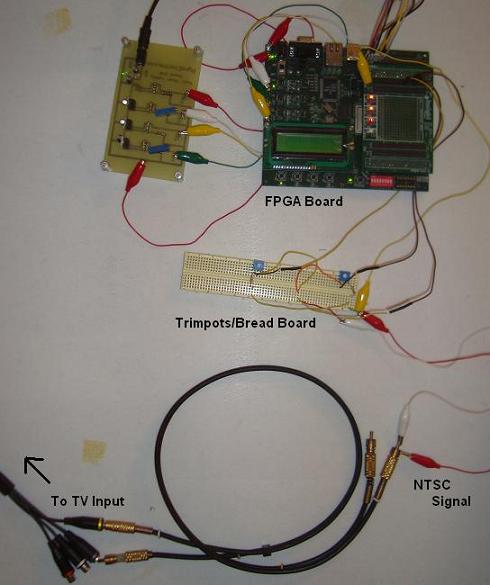Project Info
Author: Chris
Difficulty: Easy
Time Invested: 1 Hours
Prerequisites:
Take a look at the above
tutorials before continuing
to read this tutorial.
Author: Chris
Difficulty: Easy
Time Invested: 1 Hours
Prerequisites:
Take a look at the above
tutorials before continuing
to read this tutorial.
Since NTSC video input/output is so common and found on many TV's, VCR's and DVD players we'll explore the theory of how it works and then build our own system using VHDL to display stuffs whatever we like. Due to the complexity of how NTSC works, we'll limit colors to just black and white, for now.

Purpose & Overview of this tutorial
In this tutorial we will first understand what NTSC is as a data transmission line standard in theory and then put that theory to practice, making the NTSC video using VHDL code. Since NTSC is a 1 signal video output, the hardware parts required for this tutorial is very limited.
The first test of our NTSC video output will be to display 3 stripes: Black, White and Black on the screen. If we can output that video signal on the screen, then we can output anything. At that point, we'll try to display some black and white images and see how things come out.